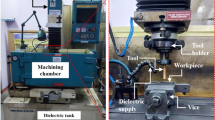Abstract
The European Tritium Handling Experimental Laboratory (ETHEL) at JRC-Ispra is constructed within the ESSOR reactor complex and is therefore required to be consistent with the existing site license agreement. This paper summarizes the status of ETHEL under the Italian licensing legislation and focuses, in particular, on the problem of tritium discharges under routine conditions. First, the available margins for additional tritium releases from the ESSOR complex are established by taking into account the existing operational requirements. The discharge requirements of ETHEL are then estimated by analyzing the various in-plant routes by which tritium may be released to the environment under normal operation conditions. An analysis is also undertaken for assessing the radiological impact on the population due to exposure and ingestion pathways. It is shown that the expected gaseous releases and tritiated aqueous discharges comply comfortably with the existing site limits and the fraction available for ETHEL.
Similar content being viewed by others
References
G. Vassallo, G. Biasoli, G. Grassi, G. Magni, and A. Simonetta. (1992). Design, construction, commissioning, licensing and future operational aspects of the European tritium handling experimental laboratory.Fusion Technol. 21, 235–240.
J. Bourdon, F. Mannone, A. Aytekin, and I. S. Wheelton. (1992). The design and operation of containments for tritium experiments and their associated gaseous detritiation systems in ETHEL.Fusion Technol. 21, 352–358.
F. Mannone, H. Dworschak, and G. Vassallo (1992). ETHEL's systems and facilities for safe management of tritiated wastes.Fusion Technol. 21, 714–718.
J. Bourdon, G. Vassallo, and G. Magni (1992). The receipt, storage and distribution of tritium in ETHEL.Fusion Technol. 21, 1005–1010.
H. Dworschak, J. Bourdon, A. Benco, G. Barbera, and F. Tinagli (1992). A general review of safety aspects in ETHEL.Fusion Technol. 21, 241–246.
Report NE.94.1320.A.001, Progetto di modifica INE-Laboratorio ETHEL, Safety Report.
A. Cigna and L. Risposi (1993). Radiological Protection and Environmental Safety, inEUROCOURSE on Safety in Tritium Handling Technology, F. Mannone, ed. (Kluwer Academic Publisher).
H. W. Bartels (1991). Comparison of predicted doses due to a continuous HTO release.Fusion Eng. Des. 17, 373–380.




